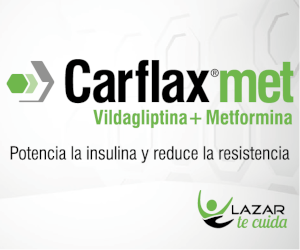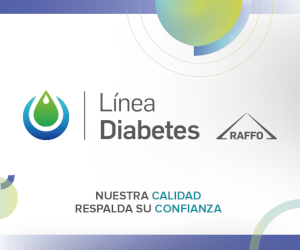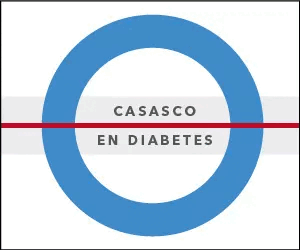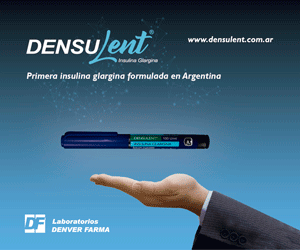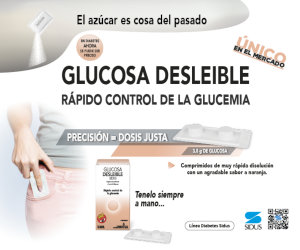Frequency of inadequate consumption of vitamin B12 and its serum levels in people with diabetes mellitus type 2 under metformin treatment in health centers of the Province of Buenos Aires
DOI:
https://doi.org/10.47196/diab.v56i2.517Keywords:
consumption survey, serum b12 dose, type 2 diabetes mellitus, metforminAbstract
Introduction: the prolonged use of metformin and the lack of consumption of vitamin B12 can cause its deficit, in T2D.
Objectives: to analyze the frequency of insufficient consumption of vitamin B12 according to: personal characteristics, anthropometric and laboratory data, and use of metformin; associate serum cobalamin levels with metformin dose and time; establish a relationship between B12 intake and serum levels.
Materials and methods: cross-sectional design. Through a survey of the frequency of consumption of food sources of B12 in 200 patients treated with metformin for more than 18 months. Clinical, anthropometric, laboratory data, time and dose of metformin were analyzed in 2 health centers in the Province of Buenos Aires.
Results: the percentage of deficient consumption was 29%. 47.5% of unemployment was registered, which reached an intake deficit of 32.6%. Serum B12 was measured in 65% of the sample where 53.8% of values were abnormal (0.8% in deficient levels) and 23% at levels normal lower cut-off point, with a significant association being observed at doses of metformin ≥1,500 mg. Deficiencies in B12 intake (<2.4 µg/day) were almost 4 times higher in the group with the lowest erythrocyte count (76.9% vs 18.5%; p<0.00 ). The MCV and platelet count yielded statistically significant data.
Conclusions: although 29% of the sample exhibited poor vitamin intake, 90% of patients with serum deficiency had adequate intakes of vitamin B12. Given that it is a cross-sectional design, where causality cannot be evaluated, it is suggested: in patients undergoing pharmacological intervention with metformin, consider the impact of this in deficient situations.
References
I. Barceló A, Aedo C, Rajpathak S, Robles S. The cost of diabetes in Latin America and the Caribbean. Bull World Health Organ 2003;81(1):19-27.
II. Whiting D, Guariguata L, Weil C, Shaw J. IDF Diabetes Atlas: Global estimates of the prevalence of diabetes for 2011 and 2030. Diabetes Res Clin Pract 2011;94(3):311-321. doi: 10.1016/j. diabres.2011.10.029.
III. Pratley R, Heller S, Miller M.Treatment of type 2 diabetes mellitus in the older adult: a review. Endocr Pract 2014;210(7): 722-73.
IV. American Diabetes Association. Pharmacologic approaches to glycemic treatment: standards of medical care in diabetes 2019. Diabetes Care 2019;42(1):90102. Disponible en: https:// care.diabetesjournals.org/content/diacare/suppl/2018/12/17/42. Supplement_1.DC 1/DC_42_S1_2019_UPDATED.pdf.
V. Nathan D, Buse J, Davidson M, Ferrannini E, Holman R, et al. Medical management of hyperglycemia in type 2 diabetes. A consensus algorithm for the initiation and adjustment of therapy. A consensus statement of the American Diabetes Association and the European Association for the Study of Diabetes. Diabetes Care 2009;32(1):193-203.
VI. Bauman W, Shaw S, Jayatilleke E, Spungen A, Herbert V. Increased intake of calcium reverses vitamin B12 malabsorption induced by metformin. Diabetes Care 2000; 23(9):1227-1231.
VII. Ouvarovskaia V, Portillo K, Delgado M, Requeno M, Torrente J, et al. Vitamin B12 deficiency in type 2 diabetics treated with metformin. Atención Primaria 2013;45(2):121-122.
VIII. Torresani M, Somoza M. Proceso del cuidado nutricional. En: Lineamientos para el cuidado nutricional. 2o Edición. Buenos Aires: Editorial Eudeba; 2005; 21-58.
IX. Martin Moreno J, Gorgojo L. Valoración de la ingesta dietética a nivel poblacional mediante cuestionarios individuales: sombras y luces metodológicas. Rev Esp Salud Pública 2007;81(5):507-518. Disponible en: https://scielo.isciii.es/pdf/resp/v81n5/colaboracion6.pdf.
X. WilletW,HuF.Notthetimetoabandonthefoodfrequencyquestionnaire: point. Cancer Epidemiol Biomarkers Prev 2006; 15(10):1757- 1758. Disponible en: le:///C:/Users/usuario/Downloads/1757.full.pdf.
XI. Menchu M, Méndez H. Tabla de composición de alimentos de Centroamérica del Instituto de Nutrición de Centroamérica y Panamá (INCAP). Organización Panamericana de la Salud. 2o Ed. 3o Reimpresión. Guatemala: Editorial Serviprensa; 2012. Disponible en: http://www.incap.int/mesocaribefoods/dmdocuments/TablaCAlimentos.pdf.
XII. Obeid R, Heil S, Verhoeven M, van den Heuvel E, Groot L, et al. Vitamin B12 intake from animal foods, biomarkers, and health aspects. Front Nutr 2019;6:93. doi: 10.3389/fnut.2019.00093.
XIII. Hannibal L, Bjorke-Monsen A, Behringer S, Gruner S, Spiekerkoetter U, et al. Biomarkers and algorithms for the diagnosis of vitamin B12 deficiency. Front Mol Biosci 2016;3:1-16. doi:10.3389/fmolb.2016.00027.
XIV. Qutob M,Takruri H, Barghouti F. Evaluation of true vitamin B12 deficiency in a group of jordanians aged 20-40 years visiting the Jordan University Hospital. Pakistan Journal of Nutrition 2011;10(4):343-9.
XV. Briani C, Dalla Torre C, Citton V, Manara R, Pompanin S, et al. Cobalamin deficiency: clinical picture and radiological findings. Nutrients 2013;5:4521-4539.
XVI. De Jager J, Kooy A, Lehert P, Wulffelé M, van der Kolk J, et al. Long term treatment with metformina in patients with type 2 diabetes and risk of vitamin B12 de ciency. Randomised Placebo ControlledTrial BMJ 2010;341:21-81.
XVII. Instituto de Nutrición de Centroamérica y Panamá. Manual de Instrumentos de Evaluación Dietética. INCAP N°155. 2o Edición. 3o Reimpresión. Guatemala: INCAP; 2006. Disponible en: http://www.sica.int/busqueda/busqueda_archivo.aspx?Archivo =libr_37007_3_11082009.pdf.
XVIII. Monsalve-ÁlvarezJ,González-ZapataL.Diseñodeuncuestionario de frecuencia para evaluar ingesta alimentaria en la Universidad de Antioquia, Colombia Universidad de Antioquia. Grupo de Investigación: Determinantes Sociales y Económicos del Estado de Salud y Nutrición. Nutr Hosp 2011;26(6):1333-1344.
XIX. Mardones M, Vidal K, García Milla P, Duran Agüero S. Determinación de ingesta y fuentes dietéticas de vitamina B12 en adultos mayores chilenos. Rev Esp Nutr Comunitaria 2018;24(3):112-123. Disponible en: https://www.renc.es/imagenes/auxiliar/ les/RENC_2018_3_05.pdf.
XX. Vogiatzoglou A, Smith A, Nurk E, Berstad P, Drevon C, et al. Dietary sources of vitamin B-12 and their association with plasma vitamin B-12 concentrations in the general population: the Hordaland Homocysteine Study. Am J Clin Nutr. 2009;89(4):1078- 1087. Disponible en: le:///C:/Users/usuario/Downloads/vogiatzoglou_09_ajcn_89_1078.pdf.
XXI. Russell R, Baik H, Kehayias J. Older men and women efficiently absorb vitamin B-12 from milk and forti ed bread. J Nutr 2001;131(2):291- 293. Disponible en: https://doi.org/10.1093/jn/131.2.291.
XXII. Zapata M, Rovirosa A, Carmuega E. La mesa argentina en las últimas dos décadas. Cambio en el patrón de consumo de alimentos y nutrientes (1996-2013). CESNI. 1°Edición. Ciudad Autónoma de Buenos Aires: 2016. Disponible en: http://www. cesni.org.ar/archivos/biblioteca/LA-MESA-ARGENTINA-EN- LAS-ULTIMAS-DOS-DECADAS.pdf.
XXIII. Brouwer Brolsma E, Dhonukshe Rutten R, Van Wijngaarden J, Zwaluw N, Van der Z, et al. Dietary sources of vitamin B-12 and their association with vitamin B-12 status markers in healthy older adults in the B-PROOF study. Nutrients 2015;7(9):7781-7797. Disponible en: https://www.ncbi.nlm.nih.gov/pmc/articles/ PMC4586559/pdf/nutrients-07-05364.pdf.
XXIV. Instituto Nacional de Estadísticas y Censos (INDEC). Incidencia de la pobreza y la indigencia en 31 aglomerados urbanos. INDEC 2020;5 (59):1-18. Disponible en: https://www.indec.gob.ar/ uploads/informesdeprensa/eph_pobreza_02_2082FA92E916.pdf.
XXV. Instituto Nacional de Estadística y Censos (INDEC). Estudio sobre el impacto de la COVID-19 en los hogares del Gran Buenos Aires. INDEC. 1° Edición. Ciudad Autónoma de Buenos Aires. INDEC 2020;10-18. Disponible en: https://www.indec.gob.ar/ftp/ cuadros/sociedad/EICOVID_primer_informe.pdf.
XXVI. Curria M, Gómez J, Bejarano-López A, Rovira M, Franco H, et al. Prevalencia de la de ciencia de vitamina B12 y factores asociados en pacientes con diabetes tipo 2 tratamiento con metformina. Revista Argentina de Medicina 2019;7(3):168-173. Disponible en: https://www.researchgate.net/publication/336303633.
XXVII. Kim J, Ahn C, Fang S, Lee H, Park J. Association between metformin dose and vitamin B12 deficiency in patients with type 2 diabetes. Medicine Baltimore 2019; 98(46):1-8. Disponible en: https://www.ncbi.nlm.nih.gov/pmc/articles/PMC6867725/.
XXVIII. SouteloJ,FriztC,MoldesS,BorghiTorzilloF,Oliva,etal.Relationship between dose of metformin and vitamin B12 de ciency. Curre Res Diabetes & Obesity J 2020; 12(5): 555-846. Disponible en: https:// juniperpublishers.com/crdoj/pdf/CRDOJ.MS.ID.555846.pdf.
XXIX. Chan C, Liu S, Kho C, Lau K, Liang Y, et al. Diagnostic clues to megaloblastic anaemia without macrocytosis. Int J Lab Hematol 2007;29(3):163-171. doi: 10.1111/j.1751-553X.2007.00911.x
XXX. Aroda V, Edelstein S, Goldberg R, Knowler W, Marcovina S, et al. Long-term metformin use and vitamin B12 deficiency in the diabetes prevention program outcomes study. J Clin Endocrinol Metab 2016; 101(4):1754-1761. Disponible en: https://www. ncbi.nlm.nih.gov/pmc/articles/PMC4880159/.
XXXI. Donnelly L, Dennis J, Coleman R, Sattar N, Hattersley A, et al. Risk of anemia with metformin use in type 2 diabetes: AMASTERMIND Stu- dy. Diabetes Care 2020;43(10): 2493-2499. Doi: 10.2337/dc20-1104.
XXXII. Liu Q, Li S, Quan H, Li J. Vitamin B12 status in metformin treated patients: systematic review. PLOS ONE 2014; 9:1-6. Disponible en: https://doi.org/10.1371/journal.pone.0100379.
Downloads
Published
How to Cite
Issue
Section
License
Copyright (c) 2022 on behalf of the authors. Reproduction rights: Argentine Diabetes Society

This work is licensed under a Creative Commons Attribution-NonCommercial-NoDerivatives 4.0 International License.
Dirección Nacional de Derecho de Autor, Exp. N° 5.333.129. Instituto Nacional de la Propiedad Industrial, Marca «Revista de la Sociedad Argentina de Diabetes - Asociación Civil» N° de concesión 2.605.405 y N° de disposición 1.404/13.
La Revista de la SAD está licenciada bajo Licencia Creative Commons Atribución – No Comercial – Sin Obra Derivada 4.0 Internacional.
Por otra parte, la Revista SAD permite que los autores mantengan los derechos de autor sin restricciones.













